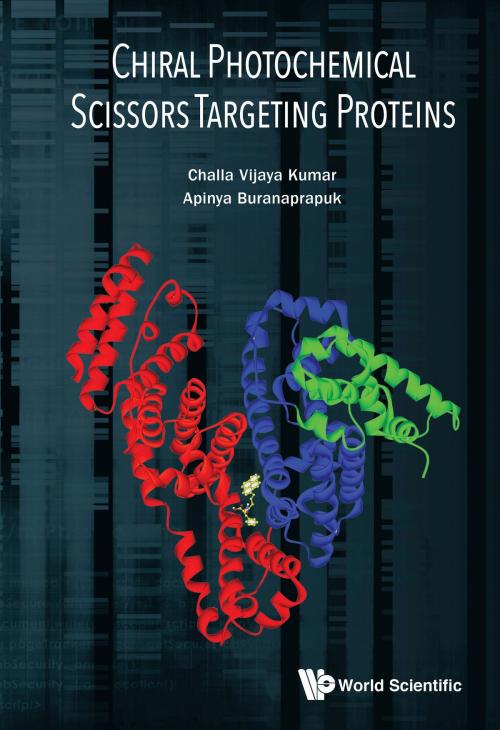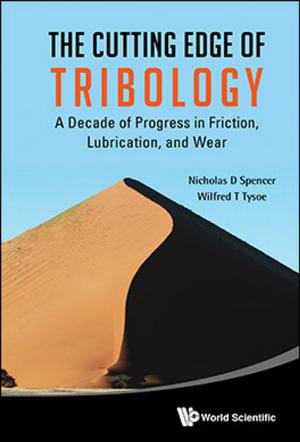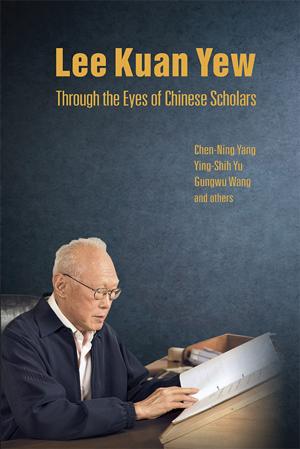Chiral Photochemical Scissors Targeting Proteins
Nonfiction, Science & Nature, Science, Other Sciences, Molecular Biology, Biological Sciences, Biochemistry| Author: | Challa Vijaya Kumar, Apinya Buranaprapuk | ISBN: | 9789813237636 |
| Publisher: | World Scientific Publishing Company | Publication: | October 19, 2018 |
| Imprint: | WSPC | Language: | English |
| Author: | Challa Vijaya Kumar, Apinya Buranaprapuk |
| ISBN: | 9789813237636 |
| Publisher: | World Scientific Publishing Company |
| Publication: | October 19, 2018 |
| Imprint: | WSPC |
| Language: | English |
The remarkable ability to target one or even a couple of sites on a large protein with a small molecule, under photochemical control, is a considerable challenge and this challenge has been addressed in some depth in this book. Systematic modification of the structure of the photoreagent provided valuable information on the binding site recognition as well as the mechanism of the photocleavage reaction. Some factors that impact the photocleavage reaction include the exact location of the probe binding site on the protein, conformations of the bound probe at the binding site, protein size, functional groups present on the probe that interact with the protein surroundings either in a favorable or unfavorable manner, overall charge on the photoreagent, and photophysical as well as photochemical properties of the probe. The protein photocleavage studies, in all case, were preceded by detailed binding studies by a variety of spectroscopic methods. Methods as simple as absorption and fluorescence spectroscopies or more sophisticated circular dichroism spectroscopy were used. Conclusions that are most consistent with the binding data indicated a single binding site on most proteins, irrespective of the probe or the protein, with only one exception noted so far. Photoactivation of the bound probe resulted in protein cleavage at a single site, in many instances. The specificity for the reaction has been investigated in detail and molecular modeling studies provided a firm ground to rationalize the observed cleavage sites. The reagents provide unique tools for sequencing large proteins by converting them into smaller fragments by non-biochemical transformations. Understanding of the rules for the above methodology are also investigated which provided rational methods for the design of small molecules that could bind at particular sites on large proteins, and this is a major breakthrough for a variety of fields including drug design, protein targeting, mass spectrometry, proteomics and other cutting-edge research areas.
Contents:
- Introduction
- Photophysical Processes
- Protein Structure
- Protein–Ligand Interactions
- Binding Thermodynamics
- Photochemical Protein Scissors
- Molecular Architecture of Protein Photocleavage Reagents
- Photochemical Scissors for BSA
- Chiral Recognition
- Tuning the Linker of the Photoreagent
- Protein Scissors Targeting Lysozyme
- Targeting Biotin Binding Sites on Avidin with Py-Biotin
- Inorganic Photochemical Proteases: Co(III)polyamine Complexes
- Photocleavage of Pepsin by Mo(VI) Complexes
- Photocelavage by Uranyl Ion
- Computational Modeling and Docking Studies
- General Methods for Studying Protein–Ligand Interaction and Protein Cleavage
- Concluding Remarks
Readership: Researchers and clinical investigators worldwide in bioinformatics, drug discovery, molecular biology and protein chemistry.
Key Features:
- Design of chiral protein scissors to photocleave proteins with specificity or high selectivity
- Mechanistic details of how the photoexcited organic molecules can damage protein structure and ultimately cleave the protein backbone
- The authors are world leaders in the area of protein photocleavage with small organic molecules and they are the pioneers of this field
The remarkable ability to target one or even a couple of sites on a large protein with a small molecule, under photochemical control, is a considerable challenge and this challenge has been addressed in some depth in this book. Systematic modification of the structure of the photoreagent provided valuable information on the binding site recognition as well as the mechanism of the photocleavage reaction. Some factors that impact the photocleavage reaction include the exact location of the probe binding site on the protein, conformations of the bound probe at the binding site, protein size, functional groups present on the probe that interact with the protein surroundings either in a favorable or unfavorable manner, overall charge on the photoreagent, and photophysical as well as photochemical properties of the probe. The protein photocleavage studies, in all case, were preceded by detailed binding studies by a variety of spectroscopic methods. Methods as simple as absorption and fluorescence spectroscopies or more sophisticated circular dichroism spectroscopy were used. Conclusions that are most consistent with the binding data indicated a single binding site on most proteins, irrespective of the probe or the protein, with only one exception noted so far. Photoactivation of the bound probe resulted in protein cleavage at a single site, in many instances. The specificity for the reaction has been investigated in detail and molecular modeling studies provided a firm ground to rationalize the observed cleavage sites. The reagents provide unique tools for sequencing large proteins by converting them into smaller fragments by non-biochemical transformations. Understanding of the rules for the above methodology are also investigated which provided rational methods for the design of small molecules that could bind at particular sites on large proteins, and this is a major breakthrough for a variety of fields including drug design, protein targeting, mass spectrometry, proteomics and other cutting-edge research areas.
Contents:
- Introduction
- Photophysical Processes
- Protein Structure
- Protein–Ligand Interactions
- Binding Thermodynamics
- Photochemical Protein Scissors
- Molecular Architecture of Protein Photocleavage Reagents
- Photochemical Scissors for BSA
- Chiral Recognition
- Tuning the Linker of the Photoreagent
- Protein Scissors Targeting Lysozyme
- Targeting Biotin Binding Sites on Avidin with Py-Biotin
- Inorganic Photochemical Proteases: Co(III)polyamine Complexes
- Photocleavage of Pepsin by Mo(VI) Complexes
- Photocelavage by Uranyl Ion
- Computational Modeling and Docking Studies
- General Methods for Studying Protein–Ligand Interaction and Protein Cleavage
- Concluding Remarks
Readership: Researchers and clinical investigators worldwide in bioinformatics, drug discovery, molecular biology and protein chemistry.
Key Features:
- Design of chiral protein scissors to photocleave proteins with specificity or high selectivity
- Mechanistic details of how the photoexcited organic molecules can damage protein structure and ultimately cleave the protein backbone
- The authors are world leaders in the area of protein photocleavage with small organic molecules and they are the pioneers of this field















